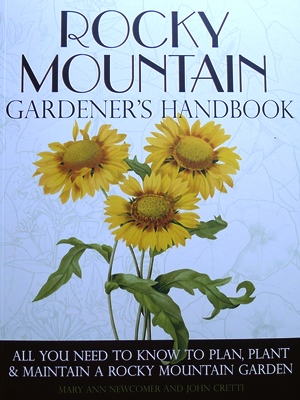
When gardeners move to the Rocky Mountain region, their first season here can be a bit surprising. For some, the most difficult adjustment is coping with the lack of rain and the extreme temperature fluctuations. For others, it’s the sad reality they have to give up growing some of their favorite plants.
Many transplants (and a few old-timers) can be frustrated by the region’s challenging conditions. The combination of low humidity, drying winds, wild temperature swings, alkaline soil and lack of predictable precipitation can make even the most accomplished gardener feel like a greenhorn.
Even if gardeners were uprooted from a similar Hardiness Zone, that’s no guarantee for success. Hardiness zones are based on an area’s average annual minimum temperature over 25-years. That means that two cities may have similar wintertime temperatures, but there may be significant differences in snow cover, frost dates and moisture in the soil.
Instead of struggling against nature, gardeners need to learn how to embrace it. One way to do that is to get your gardening hands on a copy of the Rocky Mountain Gardener’s Handbook (Cool Springs Press, 2012). The authors, Mary Ann Newcomer and John Cretti, are two experienced high-altitude horticulturists who can help save your gardening sanity.
The states included in the Rocky Mountain Gardener’s Handbook include Idaho, Montana, Wyoming, Utah, Colorado and Nevada. In addition, the information and 250-pages of full-color images are relevant to gardeners in eastern Washington and Oregon.
This comprehensive guide includes chapters on annuals, bulbs, ground covers, perennials, and roses. There are chapters on grasses, shrubs, trees and vines. The authors offer many planting options and state-specific tips for gardening design. The list of resources and a plant locator are nice added features.
Vegetable gardeners are included in the chapter devoted to “Edibles: Fruit, Vegetables and Herbs for the Rocky Mountain States.” Gardeners who want to grow vegetable gardens above 5000 feet will find the authors’ tips especially helpful. They offer ideas for growing by modifying a garden’s microclimate, using season extenders, and encouraging rapid growth with fertilizers to overcome short-season gardens.
The mouth-watering photos that illustrate the how-to-grow details for the more than 60 fruits, vegetables and herbs are a highlight of this chapter. The scones with blueberry jam are enough to make any gardener want to run outside and plant blueberries immediately.
Each description includes easy-to-read sections on “Why it’s Special, Care and Problems, and Harvest and Best Selections (by zones).” At the end of this (and other chapters) is a 12-month vegetable gardening “to-do list” that’s sure to keep gardeners on track through the season.
(A review copy of Rocky Mountain Gardener’s Handbook was provided by Cool Springs Press.)
Fine Gardening Recommended Products

A.M. Leonard Deluxe Soil Knife & Leather Sheath Combo
Fine Gardening receives a commission for items purchased through links on this site, including Amazon Associates and other affiliate advertising programs.



















Comments
Log in or create an account to post a comment.
Sign up Log in